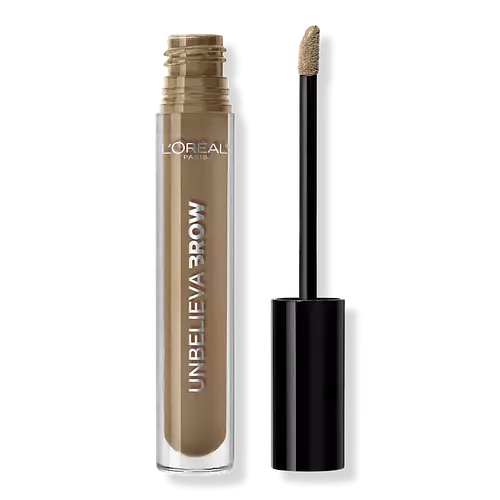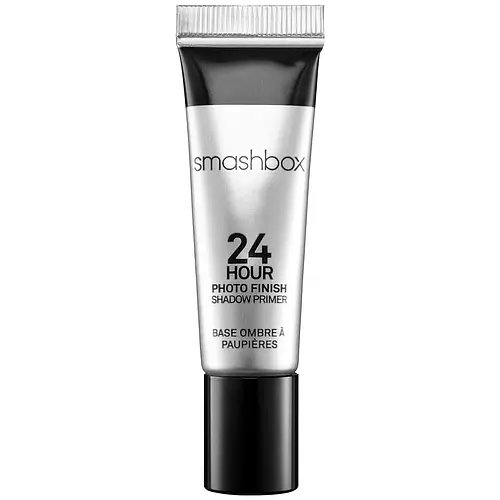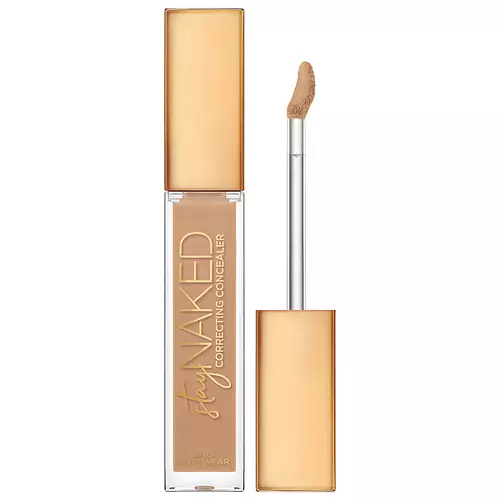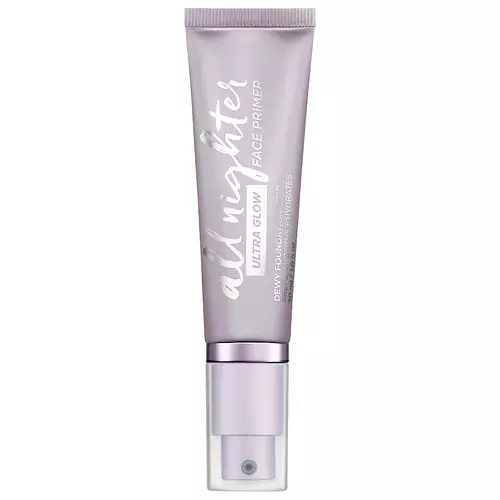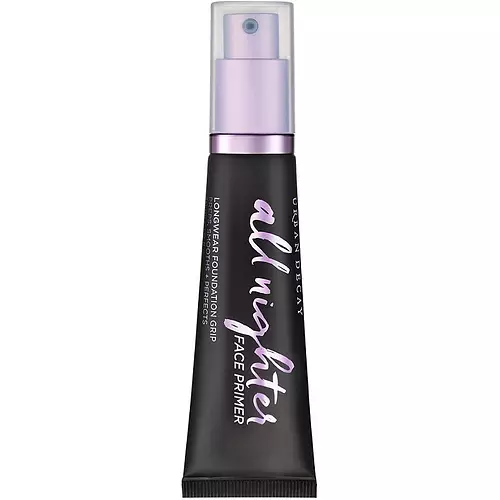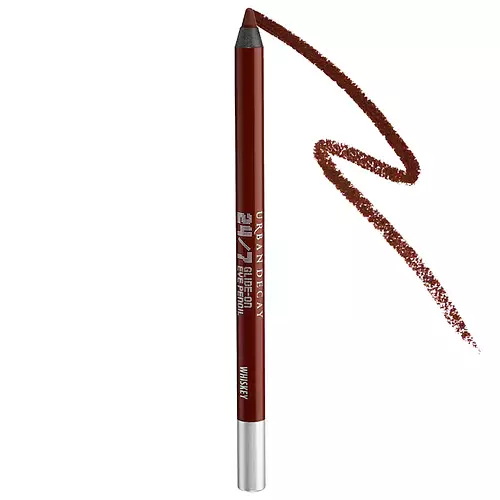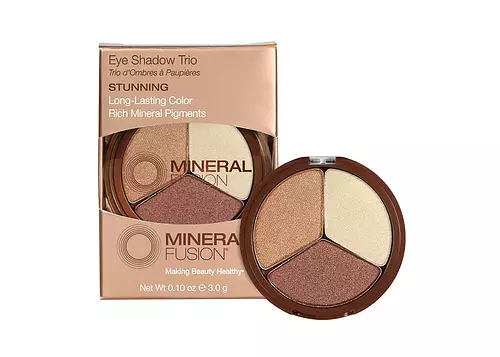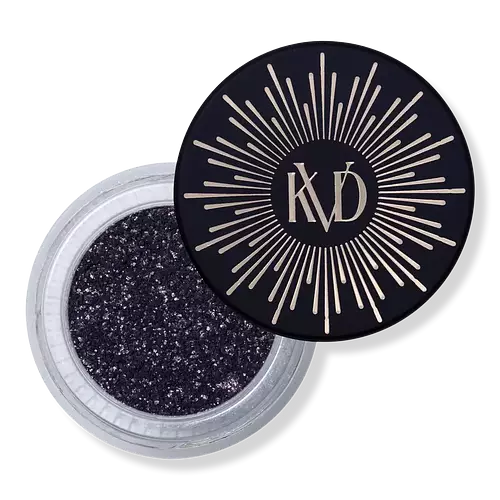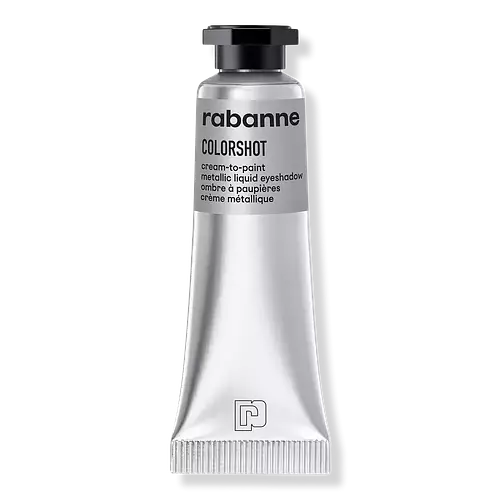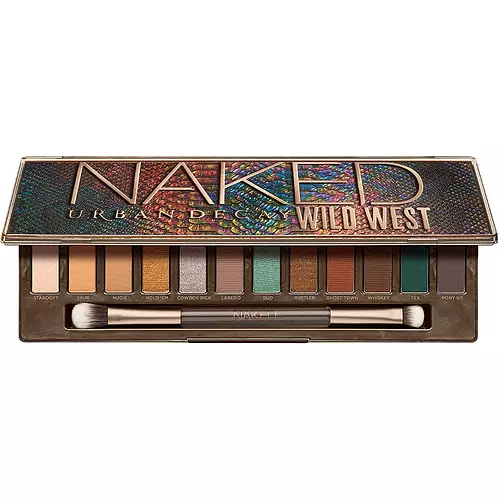
Urban Decay Wild Wild West Eyeshadow Palette Ingredients Explained
Published on July 23, 2021 Submitted by bradley_gilbert
Overview
What it is
Eyeshadow with 17 ingredients that contains exfoliants
Cool Features
It is cruelty-free and reef safe
Free From
It doesn't contain any harsh alcohols, common allergens, fragrances, oils, parabens or sulfates
Fun facts
This product is used in 3 routines created by our community.
We independently verify ingredients and our claims are backed by peer-reviewed research. Does this product need an update? Let us know.
Eyeshadow with 17 ingredients that contains exfoliants
Quick info
You should know
Notable Ingredients
This product contains 2 ingredients that may have this attribute:
Concerns
This product contains 1 ingredient that may have this attribute:
Ingredients 17
Talc is a clay mineral. It helps absorb moisture and improve the texture of products. Like other types of clay, Talc can have a slight exfoliating effect on skin. Talc can be added to increase the volume of products.
Cyclopentasiloxane is a silicone used to improve texture and trap moisture. An easier name for this is D5.
Disteardimonium Hectorite comes from the clay mineral named hectorite. It is used to add thickness to a product.
This silicone is an emollient. Emollients create a thin film on the skin to prevent moisture from escaping.
This ingredient comes from Hydroxystearic Acid, a fatty acid, and glycerin. It is used to thicken oils.
Polyethylene is a synthetic ingredient that helps the skin retain moisture. It is a polymer.
Triethylhexanoin is created from glycerin and 2-ethylhexanoic acid. It is a solvent and emollient.
We don't have a description for Hydroxystearic/Linolenic/Oleic Polyglycerides.
Sorbitan Sesquioleate is derived from sorbitol and oleic acid. It is an emulsifier and prevents ingredients from separating.
Dimethicone is a silicone used for making products smooth and silky. It also has the added benefit of sealing in hydration. The amount of dimethicone found in beauty products is considered safe and non-comedogenic, meaning it won't clog pores.
Peg-40 Stearate is a waxy solid made up of polyethylene glycol and stearic acid. It is an emulsifier and cleanser. Emulsifiers help oils and water mix.
Phenoxyethanol is a preservative that has germicide, antimicrobial, and aromatic properties. Studies show that phenoxyethanol can prevent germ and microbial growth. By itself, it has a scent that is similar to that of a rose.
Synthetic beeswax is created to be identical in structure to beeswax. It possesses the same occlusive and emulsion properties.
This ingredient is a solvent. It helps dissolve active ingredients and alter the texture of products.
Water. It's the most common cosmetic ingredient of all. You'll usually see it at the top of ingredient lists, meaning that it makes up the largest part of the product.
Isododecane, Talc, Cyclopentasiloxane, Disteardimonium Hectorite, Trimethylsiloxysilicate, Trihydroxystearin, Polyethylene, Triethylhexanoin, Hydroxystearic/Linolenic/Oleic Polyglycerides, Sorbitan Sesquioleate, Vp/Eicosene Copolymer, Dimethicone, Peg-40 Stearate, Phenoxyethanol, Synthetic Beeswax, Propylene Carbonate, Water
Ingredient Ratings
Based on the number of likes and dislikes each ingredient has received.
Ingredients Explained
Isododecane is a fragrance, emollient, and solvent.
As an emollient, it helps your skin stay soft and hydrated. Emollients help trap moisture into your skin.
Isododecane's role as a solvent makes it a great texture enhancer. It spreads smoothly on skin and does not leave a sticky feeling behind. Isododecane also helps prevent color transfer in makeup products.
Isododecane is not absorbed into skin.
Learn more about IsododecaneTalc is a clay mineral. It helps absorb moisture and improve the texture of products. Like other types of clay, Talc can have a slight exfoliating effect on skin. Talc can be added to increase the volume of products.
Some Baby powders are made by combining talc with corn starch. The word "talc" comes from Latin and originates from Arabic. Talc is a mineral commonly found throughout the world.
If you have any concerns about using talc, we recommend checking out the FDA's official page.
Learn more about TalcCyclopentasiloxane is a silicone used to improve texture and trap moisture. An easier name for this is D5.
D5 is considered lightweight and volatile. Volatile means it evaporates quickly after application. Once evaporated, D5 leaves a thin barrier that helps keep skin hydrated.
D5 is an emollient. Emollients help soften the skin and prevent water loss. Silicones create a silky texture in products. D5 helps other ingredients become more spreadable.
Studies show D5 is safe to use in skincare products. We recommend speaking with a skincare professional if you have concerns.
Learn more about CyclopentasiloxaneDisteardimonium Hectorite comes from the clay mineral named hectorite. It is used to add thickness to a product.
It can also help stabilize a product by helping to disperse other ingredients.
Hectorite is a rare, white clay mineral.
Learn more about Disteardimonium HectoriteThis silicone is an emollient. Emollients create a thin film on the skin to prevent moisture from escaping.
It is not soluble in water and helps increase water-resistance in products.
According to a manufacturer, it can blend seamlessly with silicone oils, such as Cyclopentasiloxane.
Learn more about TrimethylsiloxysilicateThis ingredient comes from Hydroxystearic Acid, a fatty acid, and glycerin. It is used to thicken oils.
Due to its fatty acid content, it is a natural emollient.
Creating trihydroxystearin involves using a chemical reaction between hydrogen and castor oil.
This ingredient may not be Malassezia folliculitis safe.
Learn more about TrihydroxystearinPolyethylene is a synthetic ingredient that helps the skin retain moisture. It is a polymer.
Polyethylene is also typically used within product formulations to help bind solid ingredients together and thicken oil-based ingredients. When added to balms and emulsions, it helps increase the melting point temperature.
Triethylhexanoin is created from glycerin and 2-ethylhexanoic acid. It is a solvent and emollient.
As a solvent, Triethylhexanoin helps dissolve ingredients to stable bases or help evenly distribute ingredients throughout the product.
It is also an emollient and helps condition the skin.
Learn more about TriethylhexanoinWe don't have a description for Hydroxystearic/Linolenic/Oleic Polyglycerides.
Sorbitan Sesquioleate is derived from sorbitol and oleic acid. It is an emulsifier and prevents ingredients from separating.
Specifically, this ingredient is a water-in-oil emulsifier, meaning it helps water dissolve into oil.
Some studies suggest this ingredient may cause irritation in some people. If you are unsure, it is best to patch test.
This ingredient may not be Malassezia folliculitis, or fungal-acne safe.
Learn more about Sorbitan SesquioleateWe don't have a description for Vp/Eicosene Copolymer.
Dimethicone is a silicone used for making products smooth and silky. It also has the added benefit of sealing in hydration. The amount of dimethicone found in beauty products is considered safe and non-comedogenic, meaning it won't clog pores.
Dimethicone has been found increase absorption in skin, boosting the benefits of other ingredients. While there is concern for the safety of dimethicone, the levels used in skincare are safe for use.
Peg-40 Stearate is a waxy solid made up of polyethylene glycol and stearic acid. It is an emulsifier and cleanser. Emulsifiers help oils and water mix.
Stearic acid is a a fatty acid. Therefore, Peg-40 stearate may not be fungal-acne safe.
Phenoxyethanol is a preservative that has germicide, antimicrobial, and aromatic properties. Studies show that phenoxyethanol can prevent germ and microbial growth. By itself, it has a scent that is similar to that of a rose.
It's often used in formulations along with Caprylyl Glycol to preserve the shelf life of products.
Synthetic beeswax is created to be identical in structure to beeswax. It possesses the same occlusive and emulsion properties.
A blend of fatty acid esters, fatty acids, and alcohols are used to create synthetic beeswax. Whether or not this ingredient is vegan depends on the source. Sometimes, lanolin is used for its creation.
This ingredient may not be Malassezia folliculitis, or fungal-acne safe.
Learn more about Synthetic BeeswaxThis ingredient is a solvent. It helps dissolve active ingredients and alter the texture of products.
Propylene Carbonate is commonly used in makeup and with clay, such as montmorillonite or bentonite.
Studies show this ingredient to be safe for cosmetics. When it is undiluted, it can cause skin irritation. (It is always diluted in skincare and makeup). This ingredient is water-soluble.
Propylene Carbonate is created from propylene glycol and carbonic acid.
Learn more about Propylene CarbonateWater. It's the most common cosmetic ingredient of all. You'll usually see it at the top of ingredient lists, meaning that it makes up the largest part of the product.
So why is it so popular? Water most often acts as a solvent - this means that it helps dissolve other ingredients into the formulation.
You'll also recognize water as that liquid we all need to stay alive. Talk about multi-purpose! If you see this, drink a glass of water. Stay hydrated!
Learn more about WaterWhen to use
How this product is used by our community
Compared With
Here are some products that it's often compared with
More Urban Decay Products
See all Urban Decay productsMore Eyeshadows
See all eyeshadowsWe're dedicated to providing you with the most up-to-date and science-backed ingredient info out there.
The data we've presented on this page has been verified by a member of the SkinSort Team.
Read more about us

